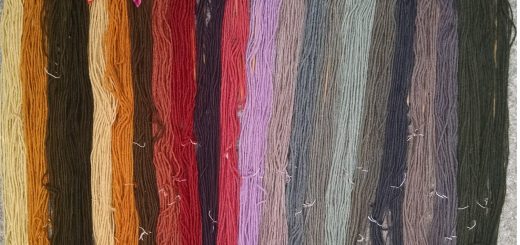#154: Panellus stipticus
This little brown mushroom isn’t much to look at… at least during the daytime. At night, however, the unassuming mushroom reveals its most interesting feature: it glows in the dark! Known as the “Bitter Oyster,” “Luminescent Panellus,” or “Bitter Oysterling” (if you live in Europe), Panellus stipticus looks like a small, brown oyster mushroom. A helpful feature that separates it from most other oyster-like mushrooms is that it has a tough texture.
P. stipticus is fairly easy to identify by its fruiting habit and texture. The little brown mushroom grows like an oyster mushroom: it fruits from wood, has a short, lateral stipe that supports a fan-shaped to kidney-shaped pileus, and usually fruits in overlapping, shelf-like clusters. At first glance, I normally think P. stipticus is a species of Crepidotus or something similar. However, Crepidotus species lack a stipe and are much more pliable. Most other oyster-like mushrooms are also fleshy in texture. Unlike these, P. stipticus is though and can be very tough when dried.
The pileus of P. stipticus is rather small, growing only 1-3cm (0.4-1in) wide. It is usually kidney-shaped and curved downward from the center, but it may flatten out somewhat in age. Even in flatter specimens, the margin is usually rolled under. The surface of the pileus is hairy, varying between velvety and woolly. As the mushroom ages and dries out, it becomes wrinkled and may develop cracks or small scales. The pileus is light brown, sometimes with yellowish tones, but may fade to nearly white as the mushroom gets older.
On the underside of the pileus, P. stipticus produces gills that radiate out from the laterally-attached stipe. This arrangement is similar in appearance to that of a folding fan. The gills are light yellow-brown to light pinkish brown in color and are often slightly darker than the pileus, at least towards the stipe. The gills fork frequently and sport many cross-veins, which sometimes makes them appear reticulate (net-like). At the stipe, the gills stop just as they meet the stipe or may run down the stipe slightly. The gills drop spores, which appear white en masse. This helps separate them from species of Crepidotus and its relatives, which leave a brown spore print.
The stipe is very short but is clearly distinct from the pileus and gills. This distinguishes P. stipticus from most oyster-like mushrooms, which do not have a clearly distinct stipe, have gills that run the length of the stipe, or lack a stipe altogether. The stipe of P. stipticus is pale brown to white, usually making it a paler version of the pileus’s color. It is covered in small brown fibrils that give it a fuzzy to velvety texture. In general, the stipe is as long as it needs to be to get the pileus parallel to the ground. It often grows no longer than 0.5cm (0.2in) when fruiting alone, whereas in large clusters some stipes may grow up to 2cm (0.8in) long. Whatever its length, the stipe is usually only 0.2-0.5cm (0.1-0.2in) wide. The flesh of P. stipticus is tough and whitish to light brown. This mushroom has no odor but does have a bitter taste that, along with its tough texture, makes it inedible.
P. stipticus is saprobic (it decomposes dead organic matter) on hardwood logs and sticks. It will fruit whenever conditions are right, but is most often found from spring through fall. The exact range of this mushroom is not known, but it can definitely be found in North America and Europe. It may also be found in parts of Asia, Australia, and New Zealand. Given this broad range, I would not be surprised if P. stipticus could also be found in Africa and South America. Within North America, P. stipticus is more common in the eastern part of the continent.
One of the most interesting features of this mushroom is that its gills glow in the dark. In eastern North America, this is one of the most commonly encountered bioluminescent fungi. This is partially due to the fact that its tough fruiting bodies last a long time, meaning you have more chances to spot them. Dried up mushrooms do not glow, but most will regain their bioluminescence when rehydrated. To see the glowing mushrooms, take P. stipticus into a dark room and allow ten minutes or so for your eyes to adjust. Alternatively, go walking at night (very carefully and preferably after a rain) with as little light as possible and look for small patches of greenish light on the forest floor. The latter option is much more dangerous, but I have known people to find P. stipticus this way (one was not even looking for mushrooms)!
Strangely, P. stipticus is bioluminescent only in eastern North America. In Europe and west of the Rocky Mountains, the mushroom does not glow. As far as I know, mycologists have not researched why this regional variation occurs. It would be interesting to compare the ecology, chemistry, and genetics of P. stipticus from different places throughout its range. Understanding why bioluminescence varies across the mushroom’s range would help mycologists understand why certain mushrooms produce light.
The specific epithet “stipticus” refers to this mushroom’s ability to stop bleeding. This practice apparently comes from traditional Chinese medicine, where the mushroom was used externally on wounds. Unfortunately, the information I found online was not very specific about this process.
See Further:
https://blog.mycology.cornell.edu/2010/11/12/evening-glow/ (glowing pictures)
http://www.mushroomexpert.com/panellus_stipticus.html
http://www.messiah.edu/oakes/fungi_on_wood/gilled%20fungi/species%20pages/Panellus%20stipticus.htm
http://www.first-nature.com/fungi/panellus-stipticus.php
http://www.rogersmushrooms.com/gallery/DisplayBlock~bid~6570.asp

![#069: Amanita muscaria, Part 1: The Type Mushroom [Archived]](https://www.fungusfactfriday.com/wp-content/themes/hueman/assets/front/img/thumb-medium-empty.png)







![#011: Characteristics of Kingdom Fungi [Archived]](https://www.fungusfactfriday.com/wp-content/themes/hueman/assets/front/img/thumb-small-empty.png)


1 Response
[…] in terms of color, size, texture, etc. Even gill morphology can be variable: Panellus stipticus (FFF#154) has gills that are distinctly attached to its short stipe and Lentinellus ursinus produces gills […]